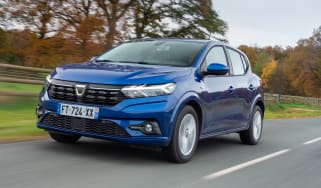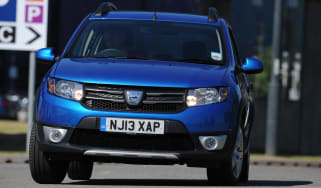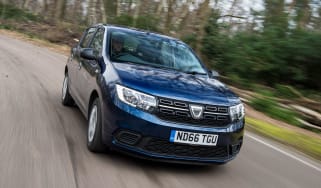Dacia Sandero review
Sharper looking, more spacious and better to drive than ever, there’s a lot more to like about the Dacia Sandero than just the price

Dacia claims its focus is making quality new cars at an affordable price, and the latest Sandero is the epitome of that mission statement. The value-focused supermini maintains its position as one of the UK’s cheapest cars to buy, even after upgrades to the Sandero’s styling, cabin and running gear which have only added to its appeal with cost-conscious buyers.
The Dacia Sandero continues to offer great practicality, plus its celebrated low running costs aren’t overly affected by opting for the higher-spec version. They say the most simple ideas are often the best, and Dacia’s well-judged, great-value supermini is right up there.
About the Dacia Sandero
Dacia was founded in 1966, but the Romanian carmaker didn’t officially launch in the UK until 2013. It has always been laser focused on offering new levels of family car affordability – in fact its first TV advert proudly declared: “We don’t do frivolity; function’s our thing,” before stamping the £5,995 Sandero list price across the screen. For those on a budget, it was a hard proposition to resist.
Dacia has now sold over eight millions cars worldwide, including 250,000 in the UK alone, and things are looking even better for customers with the latest, third-generation Sandero supermini now on showroom floors. The brand has implemented a raft of engineering changes and tech updates which provide the Sandero with a modern, more up-to-date feel, yet crucially, prices are still extraordinarily low. Towards the end of 2022, the value-focused brand’s entire line-up also received sharper styling, plus a new headlight design and interlinked Dacia logo.
More reviews
Car group tests
In-depth reviews
Long-term tests
Road tests
With a fresh new look and a little extra finesse, the Sandero now asks serious questions of buyers looking towards a ‘traditional’ supermini purchase. The Skoda Fabia, Volkswagen Polo, Hyundai i20 and closely related Renault Clio all rival the Dacia for size, but can’t compete on price, with an entry-level version of all four still costing £4,000-5,000 more than a top-spec Sandero. The only similarly sized superminis that come close to the Sandero’s starting figure are the base Citroen C3 and Kia Rio, though the Dacia still undercuts each by a few grand.
As the entry-level Access trim with its rear manual wind-up windows and lack of air-conditioning is no longer available to order, the Sandero range now starts from £13,795 in Essential spec. This gets you air-con and remote central locking, plus cruise control, DAB and Bluetooth connectivity, but no touchscreen.
That’s reserved for the top-of-the-range Expression trim which for only £1,000 extra feels palatial in comparison with grey accents, upgraded upholstery, rear-view camera and an eight-inch infotainment touchscreen with complimentary Android Auto and Apple CarPlay connectivity.
If you're after a little extra SUV style, the Sandero Stepway comes with a raised ride height and rugged exterior trim for only a small price premium. Both sit on a modified version of the Renault Clio’s CMF platform which helps to improve the driving experience, while the Sandero's new chassis is lighter and stiffer than before.
The SCe 65 1.0-litre three-cylinder unit, producing a humble 64bhp, is no longer part of the range, though the turbocharged TCe 90 variant was probably the more astute choice anyway, with 89bhp, a useful extra slug of torque and fuel economy of up to 53.3mpg.

The TCe 100 Bi-Fuel unit, which offers cost-saving LPG tech, completes the line-up but is likely to be a niche choice. Both the TCe 90 and TCe 100 Bi-Fuel cars are paired with a five-speed manual gearbox, but the TCe 90 is available with a CVT automatic as well.
For an alternative review of the Dacia Sandero, visit our sister site carbuyer.co.uk...



























